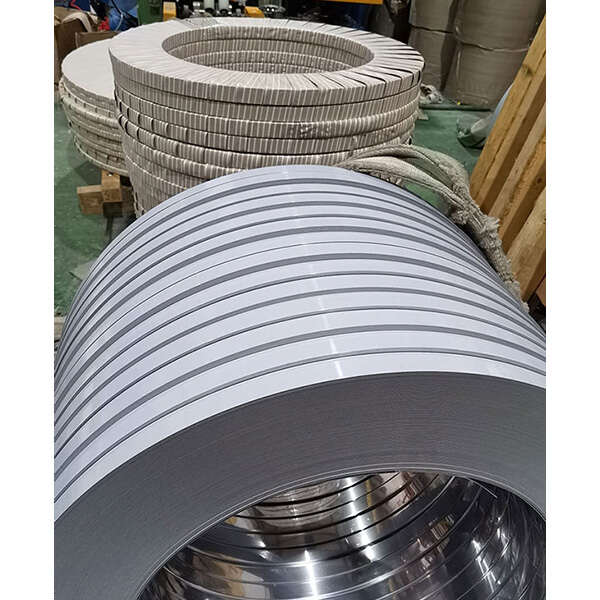

Although stainless steel foil rolls and stainless steel foil strips are both forms of stainless steel materials, they differ in shape, processing methods, and application areas. Here are the main differences between them:
1. Shape and size
Stainless steel foil rolls refer to very thin stainless steel sheets that have been rolled, usually with a thickness of less than 0.1 mm. Foil rolls are in roll form, which means that they are stored and transported in the form of rolls.
Its width is usually wider and can be customized according to customer needs. The length of the foil roll is also longer, usually in a continuous roll form.
Stainless steel foil strips:
Stainless steel foil strips usually refer to thin stainless steel sheets that have been cut, with a narrow width, usually between a few millimeters and tens of millimeters. Foil strips may be in strip form for specific precision processing or applications.
The width and length of stainless steel foil strips can be cut into specific sizes according to application requirements.
2. Processing method
Stainless steel foil rolls are cold-rolled or hot-rolled multiple times during the rolling process, and are as thin as a few microns or 0.1 mm. The foil roll is formed into a thin and curlable state after a long rolling and stretching process.
Stainless steel foil strip:
Stainless steel foil strip is usually further cut, stretched or formed on the basis of stainless steel foil roll, and the wide foil roll is cut into narrower strips. In some cases, the foil strip may be obtained by stamping and other processes.
3. Thickness
Stainless steel foil roll: The thickness of the foil roll is very thin, usually between 0.02 mm and 0.1 mm, but sometimes it can be controlled in a thinner thickness range according to different application requirements, even close to 0.005 mm.
Stainless steel foil strip: The thickness range of foil strip is similar to that of foil roll, but it usually varies according to the width of the strip and application requirements. The common thickness is also thinner, but the thickness consistency and width of the strip may be more emphasized during the processing.
4. Application
Stainless steel foil roll: Foil roll is often used in industries that require ultra-thin stainless steel, such as electronics, aerospace, heat exchangers, chemical equipment, etc. due to its softness and plasticity. It can be further processed into various shapes, such as filter membranes, shielding materials, thermal insulation layers, etc.
Stainless steel foil strip: Due to its narrow width and high precision, foil strip is often used in precision machining, electronic component manufacturing, battery packaging, contact strips, edge sealing and other fields. Foil strip is also often used in the manufacture of small and precision parts, such as electrical contacts of micro-electrical appliances and precision instruments.
5. Application fields
The application of stainless steel foil rolls usually tends to be large-scale industrial production and heavy equipment applications.
Stainless steel foil strips are mostly used in scenes that require precision and narrow shapes, especially in industries that require precise control of width and thickness.
6. Transportation and storage
Stainless steel foil rolls are usually transported and stored in roll form, so its storage space requirements are relatively large, but it can be easily transported and stored for a long time.
Stainless steel foil strips are stored in flat or small rolls, which is convenient for cutting or further processing on demand.
Summary: Stainless steel foil rolls are wide, thin, roll-stored products suitable for large-scale industrial applications with good ductility and flexibility.
Stainless steel foil strips are narrow strip materials cut from foil rolls, mainly used for precision applications and delicate processing.
In short, the difference between stainless steel foil rolls and stainless steel foil strips is mainly reflected in their shape, size and application areas.
